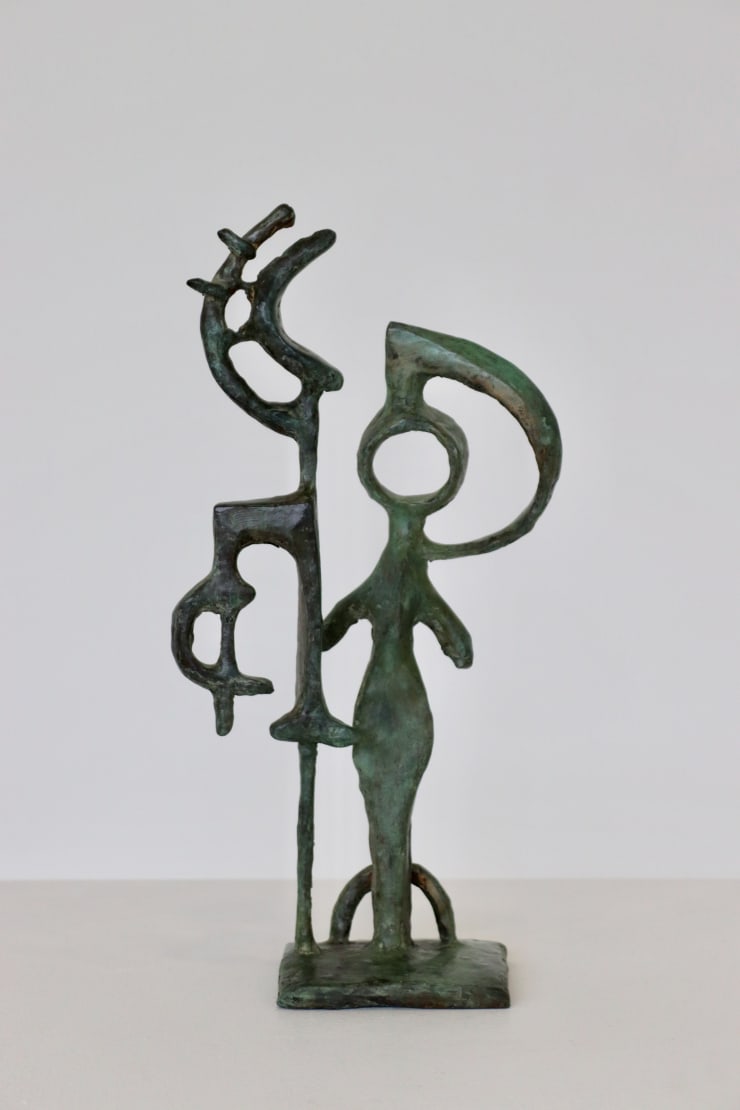-
YOU ARE CURRENTLY BASED IN NORTH LONDON BUT GREW UP IN LE MARCHE, ITALY. HOW HAVE BOTH PLACES INFLUENCED YOUR PRACTICE?
Growing up in Italy, surrounded by my lovely family and the Italian beauty of the Adriatic Sea influenced my early life poetically. I have been in London for 27 years, but my education at the Academy of Art in Italy was really important to me as it prepared me for my work. Growing up there I fell in love with Bernini, Michelangelo, and many other artists.
Moving to London gave me the freedom to express myself, first as a painter and now as a sculptor. Museums, exhibitions, nature, music, the forest, and romantic Victorian Crouch End, where I live, really inspire me. More important still are my creative friends, alongside my mentor, Michael Sandle, whose influence has deepened my practice. The Suffolk countryside and the studio there have also played an important role in my creative practice as it is the place where I grew and transitioned from painting to sculpting.
-
HOW AND WHY HAVE YOU TRANSITIONED FROM PAINTING TO SCULPTURE?
I have painted all my life but felt the urge to switch to the third-dimensional space of sculpture. Years ago, I met sculptor Jim Racine in one of my group shows in Venice during the Biennale. I shared with him my desire to sculpt, and he invited me to his foundry at Butley Mills Studios in Suffolk. It was there that I began experimenting with sculpting in bronze, and the flame that this inspired for casting has never gone away. Jim’s knowledge and technical abilities were essential in teaching me all of the necessary stages to realise these final pieces.
I enjoy multiple mediums, yet sculpture captured my heart and mind like no other and came naturally to me. While paintings traditionally represent an illusion of three-dimensional space, creating scenes and a portal into another world, sculpture is an object from another world that physically exists in this world and inhabits the space shared by the viewer. Sculpture is also tactile, you can feel and touch the texture and forms, meaning sculpture is a conversation with the material, the ideas and all the people involved in the process. Over time, I started to feel and think in true fluidity in this space of sculpture.
-
-
YOUR ITERATIVE APPROACH TO CREATING SCULPTURE ALLOWS SHAPES AND LINES TO EMERGE NATURALLY. HOW HAS THIS METHOD DEVELOPED THROUGHOUT YOUR CAREER?
My approach to a sculpture always begins with the wax. I like to let the form evolve as I work, shaping the wax to conform to an idea I have in my head or have sketched on paper, and wait for the ideal form to appear. I love to express my feelings through the work. I find objects in my subconscious and express my inner perception in a unique illusory work, creating a poetic atavistic atmosphere.
My sculptures combine intricate processes to assist me in achieving the final result. This process includes walking, connecting with nature and birds, silent pondering, sketching, sculpting in wax, mould making, bronze finishing and patinating. I create floating structures in a fantastic dream world, a deep conversation with universal energy. These creations have an integrated dynamic and a swing movement. There is a stationary aspect and a sense of movement and dynamism. Dissolving plastic shapes populate this dream landscape with animated forms, or personages, where volumes and lines float organically.
My goal is to create a compelling three-dimensional object using a combination of lines, curves, shapes, and spaces. A successful sculpture will have a sense of energy and motion while maintaining a sense of balance, with a sense of life itself, via which I explore spirituality. My work centres on creating original unique abstract sculptures which allow me to explore the interesting relationship between humans and nature.
-
-
WHAT DREW YOU TO THE TECHNIQUE OF LOST WAX CASTING?
I’m fascinated by the relationship between the object formed by hand and fire, from wax to bronze. It appeals to my interest in the poetic possibility of materials and juxtapositions that occur during the casting process.
I had been studying ancient sculptures alongside the old masters, and I was always intrigued by this technique of forming artistic expression. The lost wax technique dates back to 3,700 BC. It is a complex yet rewarding process, involving a balance between volatility and intricacy. This technique offers the flexibility to develop intricate and complex designs, which is essential to my work.
-
WHAT ARE YOU WORKING ON AT THE MOMENT?
Over the last 3 years, every time I return to Italy, I have been working on a new medium, the ‘welded steel’ technique. I like the freedom and the quicker result that this technique gives me. I’m currently working on three new sculptures, two in wax and one in bronze, the latter entitled Vortex, is almost finished. As David Smith once said: "sculptures are as free as the mind, as complex as life."
-
Photo Credits: Photo 1: Ansel Cizic, Photo 5: David X Green
Introducing: Tiziana Mandolesi
Current viewing_room









